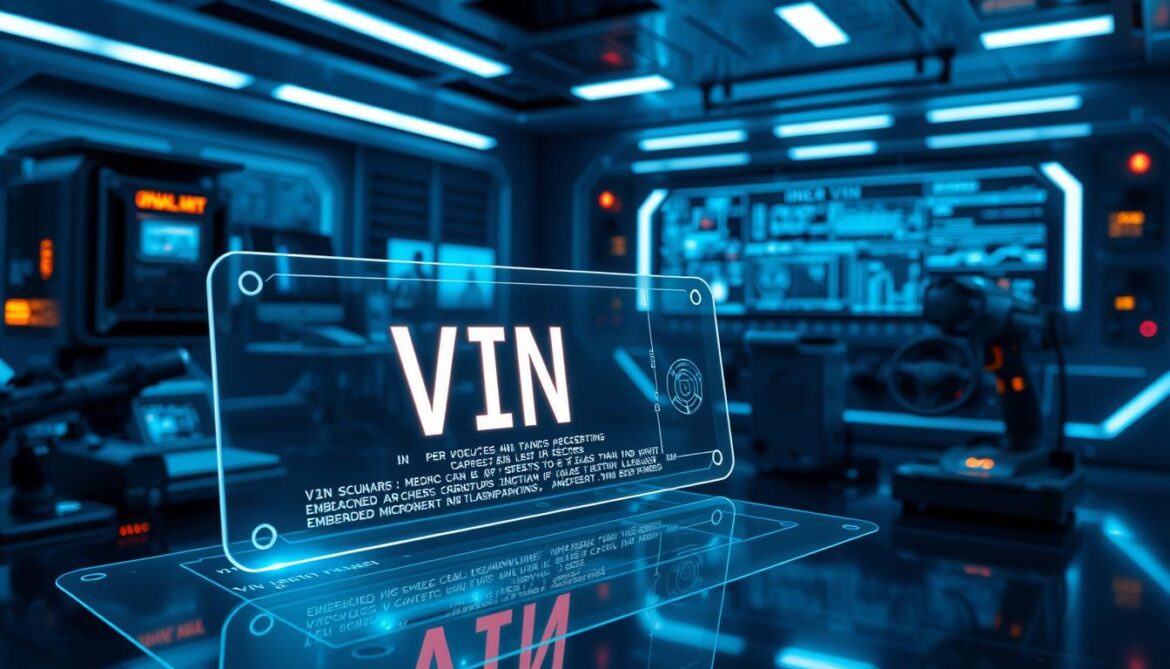Did you know that one in 10 used cars on the market has some form of undisclosed defect? Often, these defects are linked to VIN tampering. This alarming statistic shows the importance of being careful when buying a used vehicle. The Vehicle Identification Number (VIN) is vital as it can show a car’s full history, protecting you from various types of car fraud.
To protect the unique VIN, follow VIN alteration prevention tips. This will help keep the VIN safe, safeguarding your money. Whether checking the car’s history through CARFAX or VIN Verify, knowing how to protect your VIN from tampering is key. This knowledge can help you avoid problems like hidden accident history or secret liens.
Learn important ways to prevent VIN fraud to stay ahead. By using these tips, you can buy cars confidently. You’ll also protect yourself from the money and legal troubles that come with tampered vehicles.
Understanding Vehicle Identification Numbers (VINs)
A Vehicle Identification Number (VIN) is crucial when you buy a vehicle. It’s like the vehicle’s fingerprint, making it unique among millions worldwide. The VIN is 17 characters long and contains key details about the vehicle. This includes its origin, the maker, model, and when it was made.
What is a VIN?
A VIN, or Vehicle Identification Number, is 17 characters that share info unique to the vehicle. These characters outline important aspects of the car. They tell us where the vehicle is from, who made it, and about the engine and transmission. This information is essential for a VIN check.
Importance of VINs in Vehicle Identification
VINs are vital for ensuring vehicles are properly identified and tracked over their lifetimes. They protect against sales fraud. By checking a VIN, potential owners can confirm a vehicle’s details. This helps them avoid fraud and make smart choices.
How VINs Help Reveal Vehicle History
VINs help uncover a vehicle’s history. A VIN history check can reveal past accidents, service records, and any liens. This helps prevent sales fraud by making it hard for sellers to hide a vehicle’s past. A VIN check offers peace of mind by showing the vehicle’s full history.
Each part of the VIN tells us something different:
| Segment | Description |
|---|---|
| 1-3 | World Manufacturer Identifier (WMI) |
| 4-9 | Vehicle Descriptor Section (VDS) – Model, Engine Type |
| 10 | Model Year |
| 11 | Assembly Plant |
| 12-17 | Vehicle Identifier Section (VIS) – Serial Number |
Common Methods of VIN Tampering
The automotive industry is always changing. And with it, ways to mess with VINs get more advanced. It’s very important to know about these tricks to keep your car safe. Making unapproved changes to VINs can lead to big troubles, both legally and with money. Below, we’ll look at some usual ways people tamper with VINs.
Re-VINning and Its Implications
Re-VINning is a common tactic. Here, crooks swap the vehicle’s real VIN with a fake one. They do this to hide the truth about stolen or damaged cars, making them seem fine. This doesn’t just trick people who buy cars but also messes up the legal car market.
So, it’s critical to stop unauthorized VIN changes and use strong VIN protection methods.
Cloning VINs from Legal Vehicles
Cloning means taking the VIN from a legal vehicle and putting it on a stolen or damaged one. This makes the bad vehicle look good, causing possible legal trouble for people who buy them without knowing. It’s key to have VIN protection methods and watch out for unauthorized VIN changes.
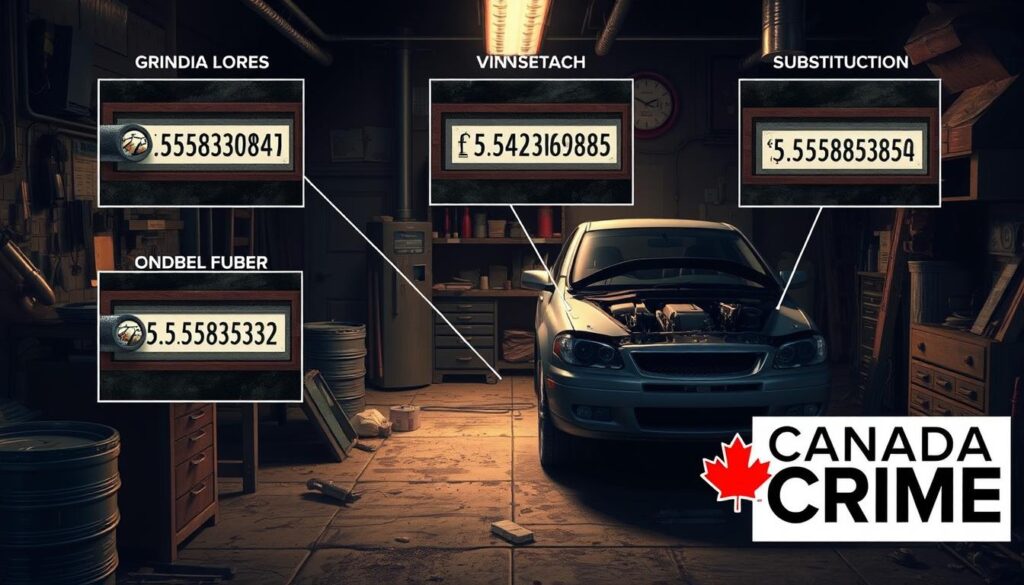
Knowing about these tampering ways can really lower the chances of being tricked. Keep yourself informed and protect your car’s identity. Use these VIN protection methods and stay safe from these dangers.
Why VIN Checking is Crucial When Buying a Used Car
When you’re looking to buy a used car, it’s vital to check its VIN. This 17-character code is key to knowing the car’s history and legitimacy. By checking the VIN, you assure yourself that the car is what it’s supposed to be. This way, you avoid legal or financial issues later on.
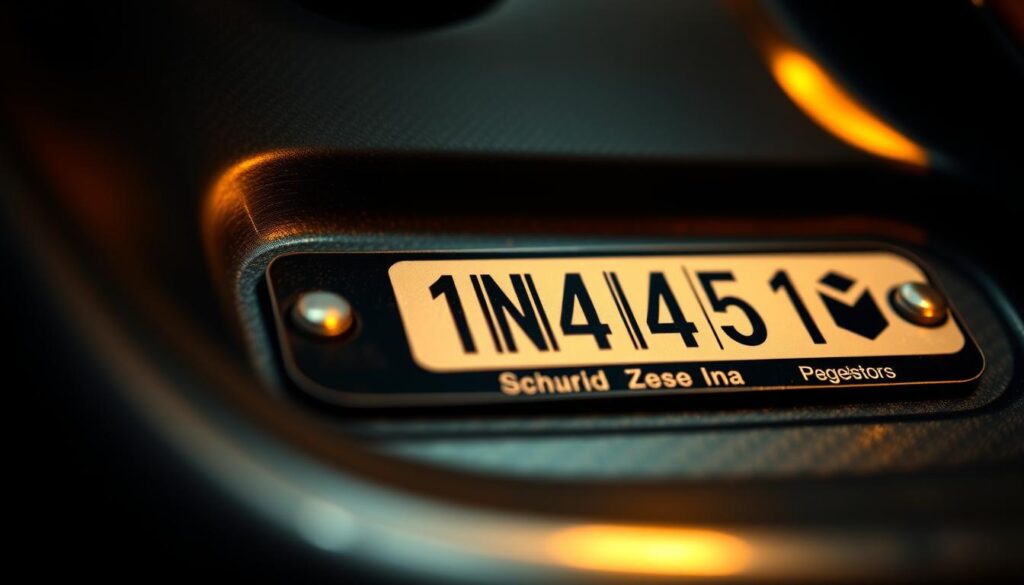
Protecting Against Stolen Vehicles
Checking the VIN helps find out if the car was stolen. Buying a stolen car can lead to big problems. You could lose the car and the money you paid for it. That’s why it’s important to check the VIN.
Identifying Rebuilt Wrecks
Rebuilt wrecks can be dangerous to drive. They may not be as safe as cars that were never damaged. By checking the car’s history with its VIN, you can avoid these risky cars. This helps you make a safer choice.
Checking for Outstanding Liens
If a car has unpaid debts, it could have a lien on it. This means you could face legal issues or even lose the car. A good VIN check will show any liens. This helps you buy a car without any debt problems.
Tips to Prevent Altering a Vehicle Identification Number (VIN)
Keeping your Vehicle Identification Number (VIN) safe is key to protecting your car from theft and fraud. Use several strategies to keep your VIN genuine.
Using Multiple VIN Checks
To guard your VIN, check it on different parts of your vehicle often. Look at the VIN on the dashboard, door frame, and all car papers to make sure they match. This step helps catch any signs of tampering early.
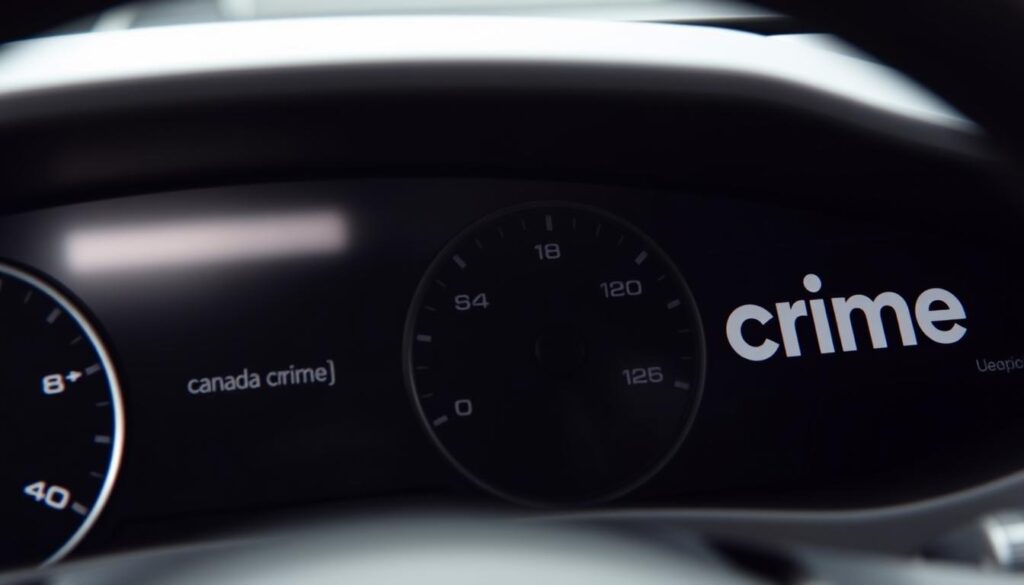
Employing Reputable VIN Lookup Services
Using well-known VIN lookup services like CARFAX is also smart. They give you detailed information about the car, such as its history and if anyone has tried to mess with the VIN. This makes you more sure about buying a used car.
Buying from Registered Dealers Only
Buying your vehicle from official dealers helps protect your VIN too. These dealers follow strict rules and are less likely to do anything shady. Going with a registered dealer lowers the chance of getting a car with a messed-up VIN. It helps you feel secure about your purchase.
Safeguarding Your Vehicle’s VIN
To protect your vehicle’s VIN effectively, follow several key steps. First, regularly check the VIN on your vehicle. This includes looking closely at VIN plates and stickers for any damage. Watch for signs like scratches or changes in color around the VIN.
Keeping your vehicle registration and insurance updated is crucial. Make sure all your documents are current and match your vehicle’s VIN. This helps you spot any errors quickly.
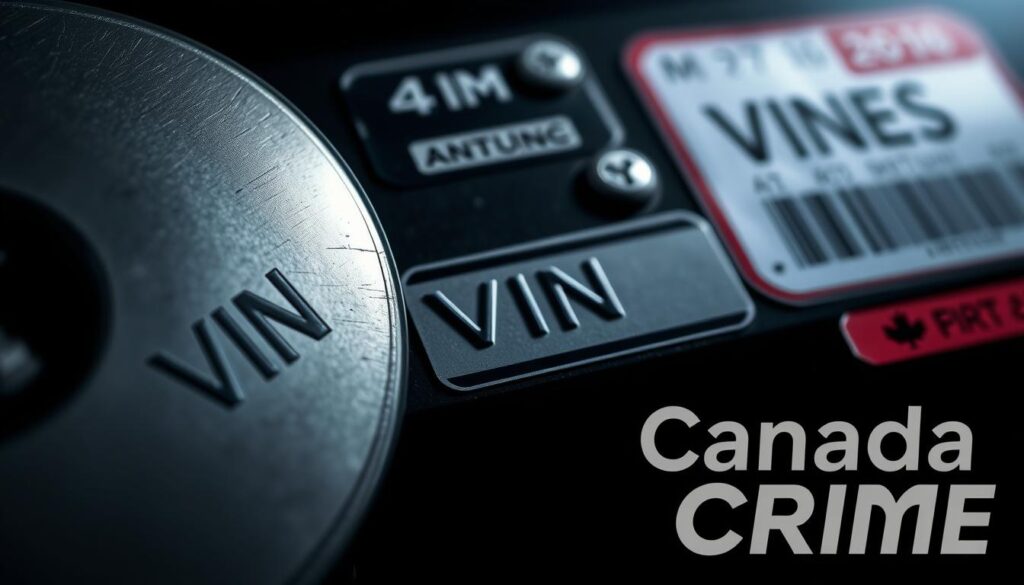
Being vigilant against tampering is vital. Look for anything unusual, like new rivets or different fonts. If the VIN plate looks like it’s been changed, it’s a red flag. By staying alert to these signs, you help prevent VIN fraud. Report any odd findings to the authorities to keep your vehicle safe.
| VIN Protection Method | Description | Advantages |
|---|---|---|
| Regular Inspection | Frequent checks of the VIN displays for any signs of tampering. | Detection of early manipulation signs. |
| Up-to-date Documentation | Ensure vehicle registration and insurance documents are current. | Accurate record keeping aids in spotting inconsistencies. |
| Report Discrepancies | Contact authorities if you notice any tampering signs. | Helps in mitigating VIN fraud risks. |
Preventing Unauthorized VIN Changes
Making changes to Vehicle Identification Numbers (VINs) without permission is risky. But, you can fight this with good strategies. Using both physical and digital security steps helps a lot. This way, your car is less likely to be messed with.
Physical Security Measures
Putting in security steps like hard-to-remove VIN plates and putting the VIN on car windows works well. The VIN should be the same in different spots of the car, like the dashboard, door frame, and engine block. If they don’t match, it could mean someone tampered with them. For checking a car’s history, you can use Carfax. Also, the Canadian Police Information Centre helps check VINs.
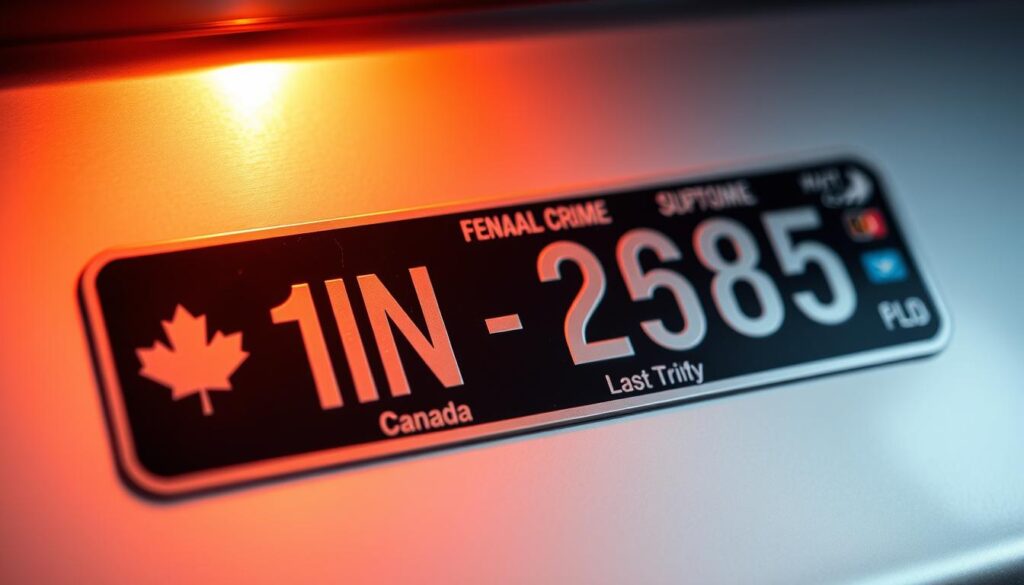
Technological Solutions for VIN Protection
Using new tech to keep VINs safe is key in stopping unauthorized changes. Encrypted digital VIN tags and GPS can scare off tamers and find stolen cars. These tools make your car’s security better. They track your vehicle accurately and make it less attractive to thieves.
When you mix these VIN security steps with old-school physical ones, you lower the risks. Using both tech and physical barriers gives your car the best protection. This makes sure your car stays safe and keeps its real identity.
Understanding the Legal and Financial Risks
Understanding vehicle ownership is vital, especially the legal and financial risks of VIN tampering. It’s important to know what’s at stake.
Legal Consequences of Buying a Tampered Vehicle
Buying a car with a changed VIN can lead to big legal problems. If the law finds out, they might take your car away. You could even face criminal charges if they think you knew about it.
Getting involved in VIN tampering doesn’t just mean paying fines. You might get caught in a long legal fight to get your money back.
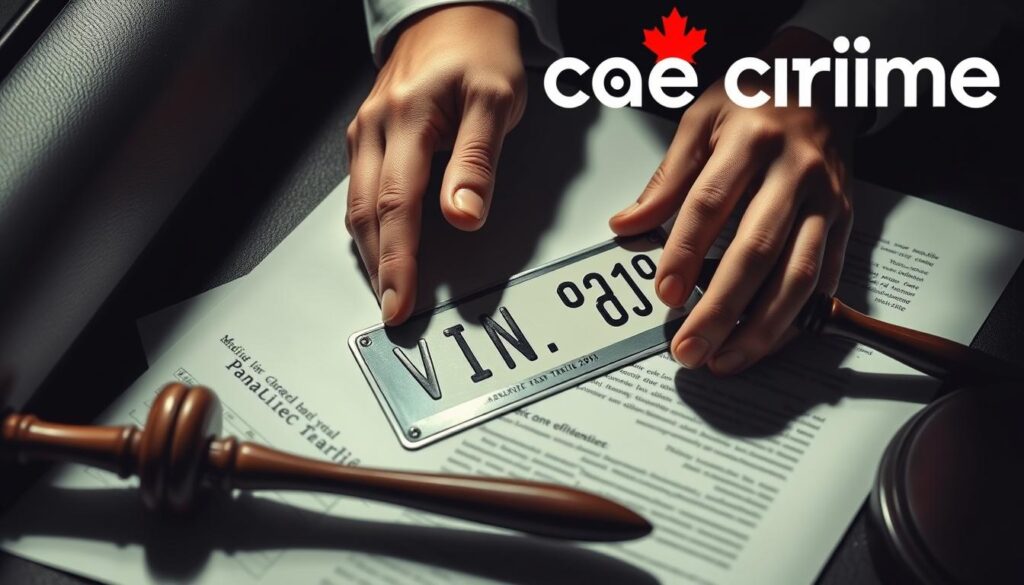
Financial Implications of VIN Fraud
VIN fraud can hit your wallet hard. If your car is seized because of tampering, you could lose its full value. You might also face fines and pay more for insurance because tampered cars are seen as risky.
Financial dangers of VIN fraud can shake up your money security. That’s why checking a car’s history and making sure it’s legit is key.
Reporting Suspected VIN Tampering
If you think someone tampered with a VIN, acting quickly is key. It’s vital that the police get all they need to look into it well. Write down everything about the car and the deal. Include the VIN you think was changed, any papers from the deal, and photos if you have them.
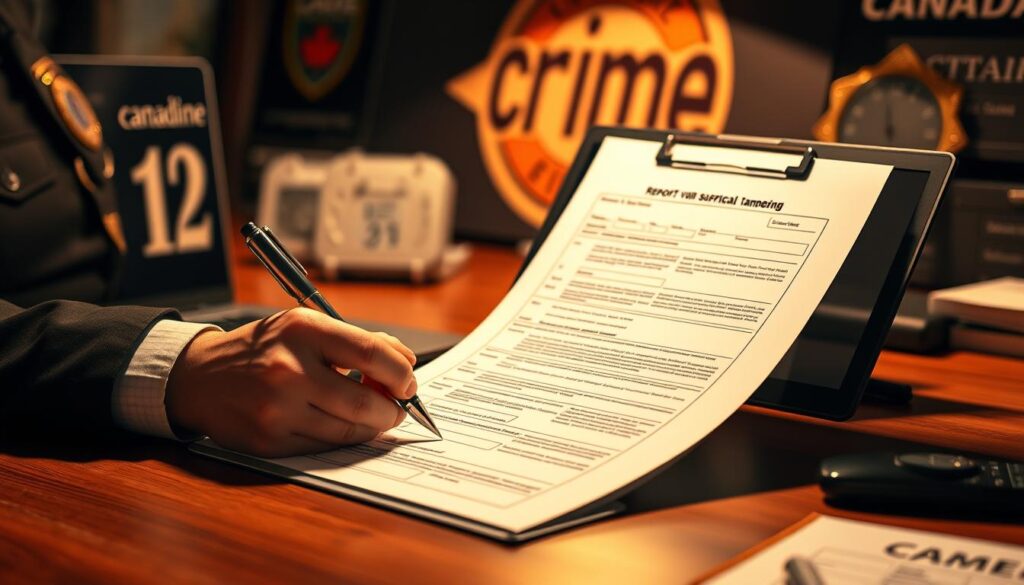
How to File a Complaint
If you’re wondering about how to report VIN tampering, start with the local police. They’re usually the first to help and can investigate right away. It’s important to give them all the details about the car and the suspected fake VIN.
You should also talk to groups that fight VIN fraud. These organizations work hard against VIN fraud and can give you extra help and advice on what to do next.
Authorities and Organizations to Contact
In Canada, there are several places that handle VIN fraud cases:
- Local Law Enforcement: For immediate action and investigation.
- Motor Vehicle Departments: Such as Service Ontario, which can check details and track the car’s history.
- Insurance Fraud Units: They have special knowledge, especially if the fraud involves insurance tricks.
- Organizations like OMVIC: The Ontario Motor Vehicle Industry Council is really active in dealing with these problems and can offer a lot of help.
Conclusion
VIN tampering is a big threat for car buyers. But, you can take steps to keep yourself safe. Knowing all about Vehicle Identification Numbers (VINs) is the first step in fighting fraud. Doing several VIN checks, using trusted VIN lookup services, and buying from known dealers are key.
Physical and digital security actions help protect your VIN from being tampered with. Being aware of the legal issues and financial risks of VIN fraud is important. It makes you see why it’s crucial to follow these safety tips. Also, know where and how to report if you think someone has tampered with a VIN.
By following these pieces of advice, you’re not just keeping your car safe. You’re also helping stop fraudsters in the car market. Be on the lookout, follow these safety recommendations, and put your vehicle’s safety first. This will lead to a safer and more trustworthy experience when buying a car.

